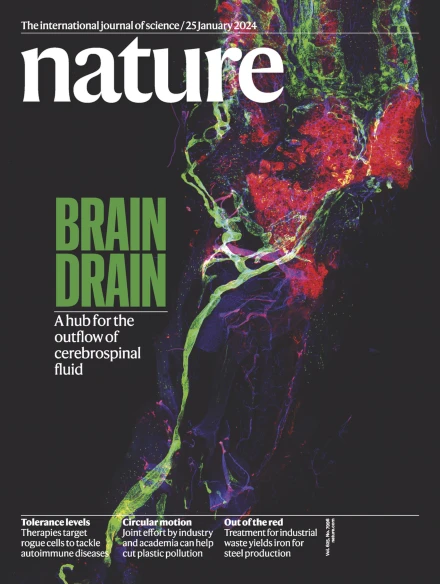氧化锂正极中的化学短程无序。
IF 50.5
1区 综合性期刊
Q1 MULTIDISCIPLINARY SCIENCES
引用次数: 0
摘要
有序的层状结构是锂(Li)离子阴极的重要组成部分1-3。然而,在充电过程中,固有的脆弱缺锂框架容易受到晶格应变、结构和/或化学机械退化的影响,导致容量迅速下降,从而缩短电池寿命2,4。在此,我们报告了一种利用将化学短程无序(CSRD)整合到氧化物阴极中来解决这些问题的方法,它涉及晶格中元素在空间维度上的局部分布,跨越几个近邻间距。这是在结构化学基本原理的指导下,通过改进的陶瓷合成工艺实现的。为了证明其可行性,我们展示了 CSRD 的引入如何对层状氧化锂钴阴极的晶体结构产生重大影响。这表现在过渡金属环境及其与氧气的相互作用上,有效防止了锂去除过程中晶体板的有害滑动和结构退化。同时,它还会影响电子结构,从而提高电子导电性。这些特性对锂离子存储能力大有裨益,可显著提高循环寿命和速率能力。此外,我们还发现 CSRD 可以通过改进化学共掺杂的方式引入到其他层状氧化物材料中,这进一步说明了 CSRD 在增强结构和电化学稳定性方面的潜力。这些发现为氧化物阴极的设计开辟了新的途径,让我们深入了解了 CSRD 对先进功能材料晶体和电子结构的影响。本文章由计算机程序翻译,如有差异,请以英文原文为准。


Chemical short-range disorder in lithium oxide cathodes
Ordered layered structures serve as essential components in lithium (Li)-ion cathodes1–3. However, on charging, the inherently delicate Li-deficient frameworks become vulnerable to lattice strain and structural and/or chemo-mechanical degradation, resulting in rapid capacity deterioration and thus short battery life2,4. Here we report an approach that addresses these issues using the integration of chemical short-range disorder (CSRD) into oxide cathodes, which involves the localized distribution of elements in a crystalline lattice over spatial dimensions, spanning a few nearest-neighbour spacings. This is guided by fundamental principles of structural chemistry and achieved through an improved ceramic synthesis process. To demonstrate its viability, we showcase how the introduction of CSRD substantially affects the crystal structure of layered Li cobalt oxide cathodes. This is manifested in the transition metal environment and its interactions with oxygen, effectively preventing detrimental sliding of crystal slabs and structural deterioration during Li removal. Meanwhile, it affects the electronic structure, leading to improved electronic conductivity. These attributes are highly beneficial for Li-ion storage capabilities, markedly improving cycle life and rate capability. Moreover, we find that CSRD can be introduced in additional layered oxide materials through improved chemical co-doping, further illustrating its potential to enhance structural and electrochemical stability. These findings open up new avenues for the design of oxide cathodes, offering insights into the effects of CSRD on the crystal and electronic structure of advanced functional materials. The introduction of chemical short-range disorder substantially affects the crystal structure of layered lithium oxide cathodes, leading to improved charge transfer and structural stability.
求助全文
通过发布文献求助,成功后即可免费获取论文全文。
去求助
来源期刊

Nature
综合性期刊-综合性期刊
CiteScore
90.00
自引率
1.20%
发文量
3652
审稿时长
3 months
期刊介绍:
Nature is a prestigious international journal that publishes peer-reviewed research in various scientific and technological fields. The selection of articles is based on criteria such as originality, importance, interdisciplinary relevance, timeliness, accessibility, elegance, and surprising conclusions. In addition to showcasing significant scientific advances, Nature delivers rapid, authoritative, insightful news, and interpretation of current and upcoming trends impacting science, scientists, and the broader public. The journal serves a dual purpose: firstly, to promptly share noteworthy scientific advances and foster discussions among scientists, and secondly, to ensure the swift dissemination of scientific results globally, emphasizing their significance for knowledge, culture, and daily life.
 求助内容:
求助内容: 应助结果提醒方式:
应助结果提醒方式:


